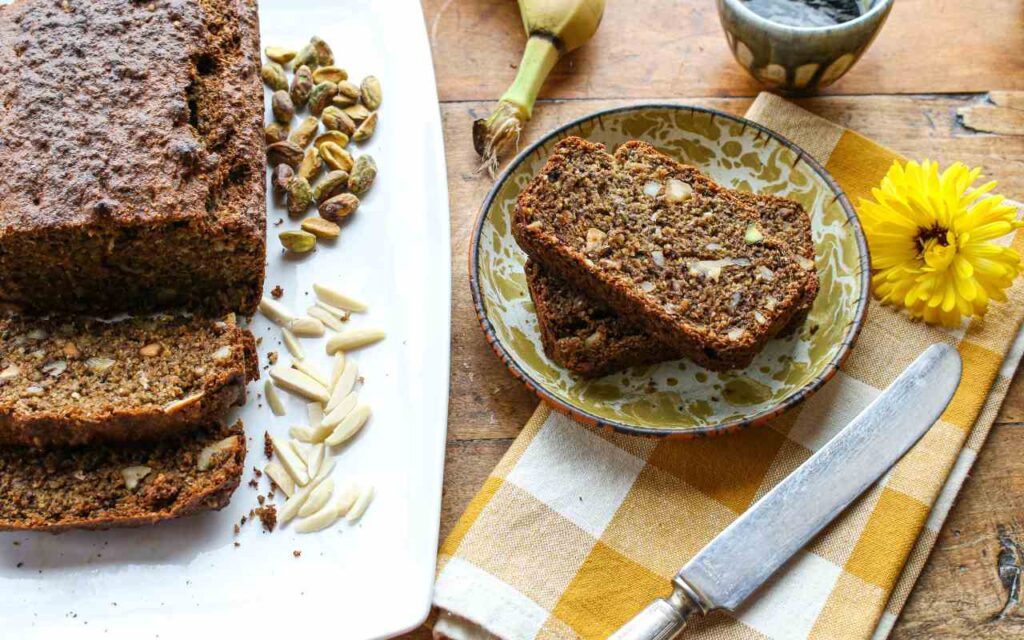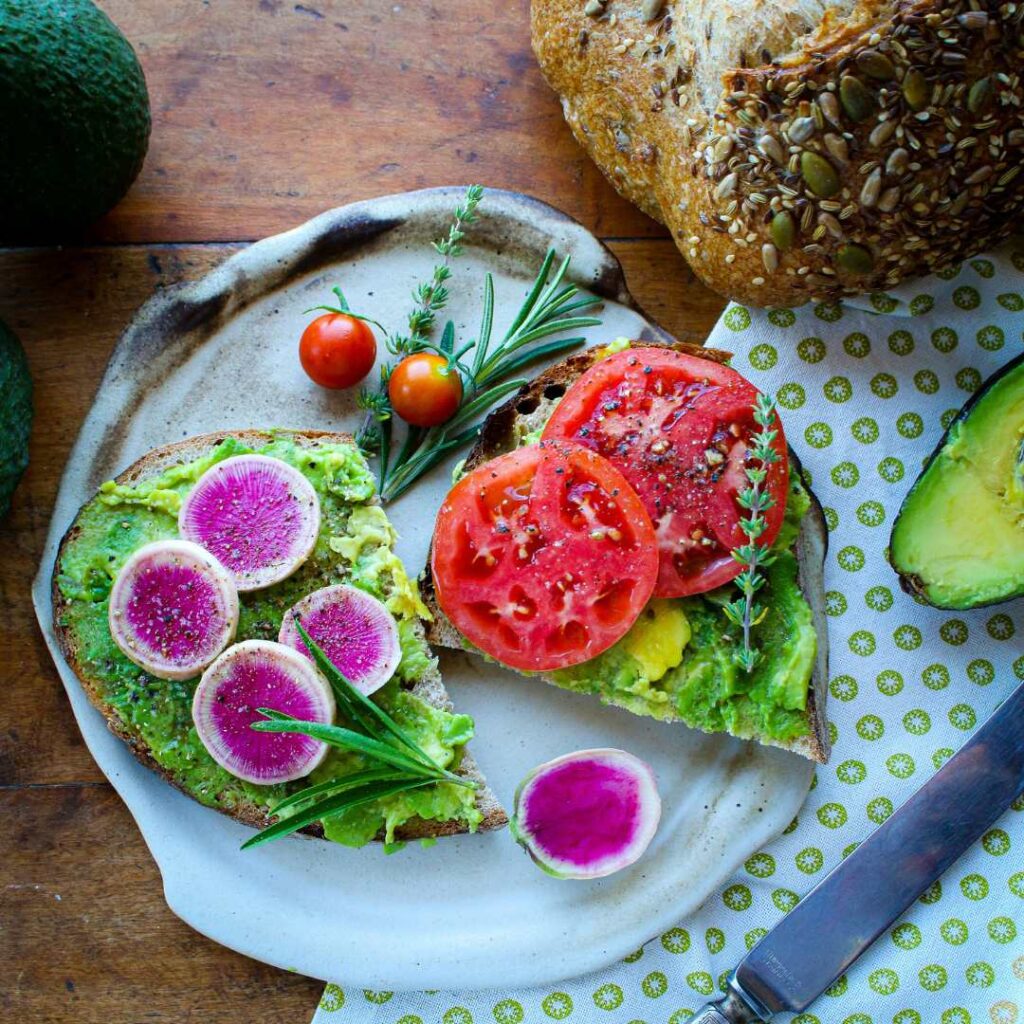Welcome spring with these healthy spring recipes for kids and spring nutrition tips featuring plant-based spring produce.
Spring is here, and it’s a perfect opportunity to plunge into healthy plant-powered eating for the whole family. After all, this is the time that crisp carrots, sweet peas, and leafy greens burgeon forth to greet the sunnier, warmer days. Getting your children to enjoy more healthy plants—vegetables, fruits, whole grains, and legumes—is a wonderful way to increase their intake of fiber, vitamins, and minerals, as well as antioxidant compounds. So, I asked some of my favorite dietitian friends and colleagues to give me the scoop on their best nutrition tips for spring cleaning kids’ diet with more spring produce. Plus, I’m sharing healthy spring recipes for kids, healthy spring snacks for kids, and nutrition tips for kids.

Healthy Spring Recipes for Kids + Spring Nutrition Tips

1. Focus on Whole Foods
Welcome spring eating to your kids plate by focusing on more whole seasonal produce (think carrots, peas, strawberries, and asparagus), as well as minimally processed whole staples, such as whole grains (whole wheat, oats, and quinoa), nuts (almonds, walnuts), and seeds (pumpkin seeds, sunflower seeds). “Serve mashed fresh fruit in place of canned fruit or fruit snacks. Serve 100% whole grain breads and cereals to encourage a solid base. Be a role model! Make sure you’re choosing veggies and fruits, too. Encourage kids to help in the kitchen and try new foods,” says Lisa Cicciarello Andrews, RDN, owner of Sound Bites Nutrition.

2. Encourage More Beans
Include more beans in your children’s diets as a plant-powered source of protein and other nutrients. “Beans are a great source of protein, iron and B vitamins, and a staple in most plant-based diets. However, not all kids like to eat them. What I like to do in my own home, and recommend to vegan or vegetarian families, is to blend or mash neutral flavor beans, like cannellini or garbanzo beans, and mix them into risottos or sauces for additional nutrition and added creaminess,” says Jessica Spiro, RD.

3. Start with the Flavors Your Kids Like
Make the most of your children’s favorite flavors to encourage more spring produce in their diets. “If they love peanut butter, then use it as a dip for new fruits and veggies, like apples or celery. Give foods fun names, like green monster smoothie, and let your children chose between a couple options so they feel they have some control. Eating battles often are all about control, so if they choose between broccoli ‘trees’ and asparagus ‘swords’ they might feel more on board with eating veggies,” says Pamela Fergusson RD, PhD.
“Familiarity is key. It can be scary for a kid to see a strange food on a plate that he or she is suddenly expected to love. It’s great to pair the unfamiliar with a familiar item. If you are trying to get your kid to try carrots, be sure they are seated next to something they have eaten dozens of times, like peanut butter or pasta. It’s also effective to have the foods you are trying to get kiddos to try in their sight frequently without any demand, or “request” or plea”, to eat them. The more a child is exposed to a new food, the less spooky it becomes. It can often take 10 times of offering a new food to a kid or just having it on the table before he or she finally gives it a sniff and pops it in his or her mouth,” says Mary Purdy, MS, RDN.

4. Keep Spring Produce Handy
Keep your spring produce on the ready so that kids can easily incorporate them into their meals, from family recipes to lunchboxes and snack time. “Wash and cut fruit, slice or dice onions, clean mushrooms, chop vegetables, and/or mince garlic. Keep all of these items in a container in the fridge until you can eat or use them. You’re more likely to reach into the fridge and grab a few strawberries to eat if they’re already washed and stemmed, right? Are you more likely to eat an apple if it’s sliced? I noticed that sometimes my son’s apple would come back in his lunchbox whole, but if I sliced it, it never did. You’d be more likely to eat a salad if the ingredients were already prepared, right? I always keep sliced onions in my fridge. 50% of the time I have sliced cucumber and carrots too. I like to slice my veggies using a mandolin so it’s quick and uniform,” says Megan Mannina, RDN of The Green Beet Blog.

5. Teach a Farm to Fork Concept
The best way to get kids to eat spring produce is to help them grow it themselves! Research shows kids are much more likely to eat produce when they are involved in gardening. And spring is the perfect time! Check out my free gardening toolkit to get grown. “What I’ve seen work for my picky eating patients with a veggie aversion is teaching them the ‘farm to fork’ concept. When kiddos get to grow their own little seeds straight from a veggie of their choice, they tend to be more curious about vegetables in general. Make it a learning experience and encourage favorite veggies first if your household already has a picky eater, then move on to different tastes and gardening adventures!” says Jennifer Rodriguez, RDN, LDN.

6. Embrace Creativity!
Instead of focusing on “pickiness,” take advantage of the creative tastes your child brings to the table. Let them be part of the process! “If they aren’t overly picky, having opinions and expressing likes and dislikes can be a good thing. It may help boost creativity while building their confidence in speaking up. You can also let them be part of the decision process in building healthy meals and snacks,” says Lauren O’Connor, RDN of WellSeek. I love this tip, as parents can help encourage a true love for produce by encouraging kids to be part of the process in shopping and planning meals to include more colorful fruits and vegetables.

7. Eat by Example
Make sure to include a range of healthy recipes—from salads and soups to main dishes and side dishes—featuring spring produce, beans, and whole grains at meal time. And not just for the kids’ plates! “Kids learn by watching their parents, so the more parents can eat these kinds of foods in front of their children, the more likely it is that they will take an interest in them. If you are picky about what you eat, chances are your kid may be,” says Mary Purdy, MS, RDN.

8. Encourage New Foods
With the variety of new spring produce in farmers markets, encourage your kids to try some new fruits and vegetables, such as asparagus, artichokes, snap peas, and leafy greens. “I got my daughter to try new veggies by having her taste them while I was prepping them. We would talk while I prepped the salads and she would get curious about the raw veggies and ask to taste them. I also found that introducing a new veggie was a whole lot easier when she was ready for dinner and hungry, so less snacking before dinner really helps. Now my 10-year-old has a healthy curiosity about food and understands that a cooked carrot might taste different than a raw carrot and she’s open to trying new things!” says Danielle Omar, RDN of Food Confidence.

For healthy spring recipes for kids, try out some of my family favorites:

For healthy spring snack recipes for kids:
More Tools for Eating and Living the Goodness

